#木の化石
Explore tagged Tumblr posts
Text

「やまは蔵、まちの原木、ケズリカケの木々」ギャラリートーク
秋田市文化創造館での展示期間、人類学・神話学を専門とする石倉敏明氏をゲストに迎えたギャラリートークを開催し、「ケズリカケ」についてや作品の魅力や制作について、読み解いて頂きました。 日時|12月17日(土) 15:00〜16:30 会場|秋田市文化創造館 1階・コミュニティスペース ゲスト|石倉 敏明(秋田公立美術大学准教授、芸術人類学者、神話学者)
youtube https://youtu.be/Txfp6PkWbZY?si=KcrXZuxEwkEuxBpJ 秋田市文化創造館 https://akitacc.jp/article/usuihitomi_talk1217/
0 notes
Quote
「企業のネットが星を 被おお い、電子や光が駆け巡っても」国家や民族が消えてなくなるほどではない近未来が舞台の『攻殻機動隊』などで、後のクリエイターに多大な影響と衝撃を与えた漫画家、士郎正宗さん(63)。デビュー40年を迎え、世田谷文学館(東京都)では初の大規模展が開催される中、読売新聞の単独書面インタビューに応じ、これまで生み出した作品や創作の秘密、AI(人工知能)がもたらす人間の未来などについて縦横無尽に語った。近年ほとんどメディアの取材を受けていない士郎さんの貴重な語録をご覧あれ。(文化��� 池田創) 展覧会では、『攻殻機動隊』の主人公の素子の印象的なセリフが印刷されたのれんが来場者を出迎える(東京都世田谷区の世田谷文学館で) 世田谷文学館で大規模展 ――デビュー40年を迎えられて、どのようにお感じになっていますか。 そもそも寡作な上、諸事情による中断・未発表・ボツ作品が多過ぎて読者諸氏に申し訳ないものの、何とかここまで生き残る事が出来て大変に幸運だったと思っています。活動が東京や他業種に広がるに連れて「水中を歩いて進むかの様な状態」になり、40年、色々と大変でした。また書籍などの荷物が転居や避難に適さない分量になっています(笑)。 ――代表作「攻殻機動隊」は海外でも熱狂的な人気が続いています。 最初期に出版物の海外展開を頑張りました。望外に細長く継続しており、ありがたい限りです。 ――今回の世田谷文学館の展覧会は大量の原画が間近で見ることができ、充実した展示内容です。 士郎正宗さんのコメントとともに作品世界を振り返る巨大な年表(東京都世田谷区の世田谷文学館で) 今回このような機会を頂き大変感謝しております。僕程度の小規模 傭兵ようへい 型漫画家でこういった事が可能なら、日本のコンテンツ業界はもっと多様多彩な作家・作品を、深掘り探索・開発活用出来るのではないかと思います。 ――「攻殻機動隊」をはじめ、ご著書は情報化社会を予見していると言われます。 たまたま運良くタイミングや関係者の都合に合致し話題として取り上げて頂いているだけで、僕以外にもそういった作家・作品は多数存在していると思います。情報化社会の好ましくない側面があまり大きくならなければ良いですね。物騒、殺伐、トラブルは架空妄想物語の中だけで十分です。 ――AIの発展についてどのように感じていますか。 利便性と損害可能性は表裏一体、これまで考えられなかったレベルの明るい未来の可能性が開ける一方で、悪用や視野 狭窄きょうさく が起き、見えざる支配も容易になっている。研究開発に係る方々には頑張って頂きたいなと思います。 簡易強化外骨格、遠隔操作系ロボット類の開発が現実的 ――幼少期に親しんだマンガや小説はどのようなものがありますか。 デビュー作『アップル��ード』のラフスケッチなどが並ぶ展示室(東京都世田谷区の世田谷文学館で) アニメ版の「鉄人28号」や「エイトマン」から入って、雑誌「りぼん」(一条ゆかり氏、大矢ちき氏、弓月光氏などなど)、松本零士氏、永井豪氏、細野不二彦氏の影響が大きいですね。大学以降は諸星大二郎氏、星野之宣氏、大友克洋氏の存在が大きいと思います。 ――「攻殻機動隊」で描いた人間の身体と精神の関係はどのように感じていますか。 脳や体が一体として機能している中では、脳が優位の制御系があったり、体が優位の制御系(例えば副腎とか脊髄反射系とか)があったり、交換可能な部分や欠損許容部分(例えば昔は虫垂や 胆嚢たんのう を結構普通に切除していた)があったり、複雑で不思議に出来ていると思います。 義体化のような、身体交換は僕が生み出した要素ではありません。スタニスラフ・レム氏の『君は生きているか?』や、日本のマンガアニメ界においては石ノ森章太郎氏の『サイボーグ009』などの有名作品がすでにありました。サイバネティクスの一般的な目的は医療や軍事だと思いますが、今後は老化・劣化対策というのも存在感を増すかもしれません。個人的には年々増加中の災害現場における簡易強化外骨格や遠隔操作系ロボット類の開発を進める方が現実的かなとは思います。 ――ご著書に細かく書き込まれた欄外文章の役割や狙いを教えてください。 リズム感が単調になりがちな説明セリフや会話を物語内部から減らせる、それによってキャラの練度・演出を高めに設定出来る、物語と読者の距離の調整ができる、などでしょうか。昨今、いや昔もこういう方法は 流行はや りではありませんが……。 ――押井守監督のアニメーション映画版のご感想をお聞かせください。 個人的には原作に気を使っている部分が押井氏にしては多めの1作目より、押井氏節全開の『イノセンス』の方が好みです。いずれも一生懸命作って頂いてありがたいなと思っております。 ――ネット社会の広がりやAI技術の発展をどう感じておられますか。 人工知能の偏向学習、悪意ある人 達たち による人工知能活用と、対策する側の人工知能活用の格差、オンライン上に無い膨大な情報の無視や軽視など、課題は山積しているのではないかと感じています。世界は 繋つな がって狭くなると同時に、逆に分断細分化が進んで互いの距離が開き、問題解決の可否、明暗の格差も広が��ている様に感じています。今まさに『言葉が通じなくなってバベルの塔が崩壊し始めている』状態でしょうか。人工知能育成では可能な限り、真実や実態に近い情報を得て優先解とするような、何らかの情報検証機構が必要でしょう。 コスパタイパ重視では驚きや発見も無い ――ネットに常時接続することが当たり前になりました。そのことをどのように感じてらっしゃいますか。 一般的なネット通販をほぼ利用しておりませんが、ネット社会になってからの方がサービスの質が低下&商品を探しにくくなったように感じています。便利、合理的、コスパタイパ重視の姿勢は内向きになりがちで、冗長性や余白が少ない分、周囲を見渡す余裕が減少し続けるし、ひいては驚きや発見も無く窮屈ですね。昔のSFでは「監視管理社会」は人々の敵として描かれるのが一般的だったのですが、現代では意外とそういう管理監視社会の利点も許容されているように思います。とはいうものの、今後もDXが進み常時接続が常識常態化し、行政サービスやインフラなどの分野で、高度化し便利で安全で充実した幸福度の高い世の中になっていくと良いのですが……。 ――「攻殻機動隊」ではサイボーグ化しても人間の内にある「ゴースト」という概念が存在します。「ゴースト」とは何でしょうか。 展示室の中央には『攻殻機動��』の原画が並び、迫力のある筆致を間近で感じられる(東京都世田谷区の世田谷文学館で) 正確か否か、定義可能か、とは別にして、宗教や哲学や文学昔話の分野で古くから使われている「たましい」「霊魂」「ソウル」などの単語が印象として一般的には伝わりやすいのではないかと思います。「何だかよくわからないが、存在しているように思えるモヤっとしたものを『ゴースト』と呼ぶ」のも娯楽分野では分かりやすくて良いかな、ということで単語を使用しています。 犬や小鳥も感情を有することが一般的にも知られており、感情は人間だけが持つ最上位の機能・特別な評価対象ではない、という観点から、マンガ版ではゴーストという単語において「感情に特別な意味を持たせていない」つもりです。当然ながら人の価値観はそれぞれなので、僕と他のアニメ版の監督諸氏とでもこうした諸々に対する考え方に違いがあるわけですが、その事自体も含めて、作品を異なる角度から捉えて楽しんで頂ければ良いなと考えています。 神話は魅力の塊なのだが… ――ご著書はシリアスな展開と迫力のある戦闘シーンの間にギャグが挟まりますね。作中におけるギャグの効用とはどのようなものでしょうか。 シリアスとギャグの挟み方や割合、そもそも混在を容認するか否か、など受け取る方々の価値観も観点も実に多様なので「万人にとって満足できる作品」というのは僕には難しいなと考えています。僕の取り扱うキャラクターたちは明日をも知れぬ立場なので、悲観的に備え楽観的に対処する、冗談でも言っていないとやっていられない、といったタイプが多めになっています。会話の軽さと行動、判断の速さ厳しさのギャップを楽しんで頂ければ良いかと思います。 ――『仙術超攻殻ORION』は日本神話をモチーフにしたファンタジーです。神話の魅力を教えてください。 神話と呼ばれる物語達は限られた要素と根源的な思考や解釈と想像力で織り上げられ、時代や民族の壁を越えて生き残っている、「選び抜かれた精鋭達」です。人々の心情や思考型や文化を映す鏡として、魅力の塊と言っても良いですね。一方で歴史を振り返ると、建築や芸術や情報戦において支配者や宗教組織や抵抗組織の都合や思惑と深く関わったと思しきものも多く、純粋に「素晴らしいか?」と問われると、答えに困る側面もあります。 ――『攻殻機動隊』のフチコマや、『ドミニオン』の小型戦車ボナパルトなど、作品からは戦車愛を感じます。 正義感にあふれる女性警察官のレオナが活躍する『ドミニオン』のコーナー(東京都世田谷区の世田谷文学館で) 「頑丈で壊れにくくて安全度が高い&移動以外にも何か作業が出来る乗り物」が好きですね。作品内に描く機会はなかなかありませんが、消防関連や港湾作業用の特殊車両、土木建築系や農林作業系の特殊機能車両なども同じように楽しくて興味深いと思っています。 気負わず欲張らず、自己ベスト更新維持 ――現在はイラスト制作や、画集刊行に活動の比重を置いておられますね。 マンガやアニメやゲームの企画書・プロット・シナリオなども色々と作っているのですが、なかなか最終商品の形にまで進める事が出来ておらず、イラストや画集は関係者や予算が少なくても実現可能な 為ため か商品の形になりやすい、というのが理由かと思います。 ――女性のエロチシズムを感じさせる美麗なイラストを生み出されています。 展示室の後半は、雑誌に発表した色鮮やかなカラーイラストが目を引く(東京都世田谷区の世田谷文学館で) モノクロでは描写しにくいがカラーでは比較的描写が容易で、競合が起きにくいと思われる光沢の肌にこだわっています。近年の画集においては、似た構図やポージングの微差バリエーションを連続、重複して描くことで、アニメの原画をパラパラと連続で見る時に近い印象や効果の誘発が起きないかと���夫しています。 ――近況を教えてください。 今も40年前も変わらず東京ではなく関西にいて不規則不健康な生活をしながら昼夜延々と絵やプロットや駄文を描き続けています。視力体力の減少により、未読書籍が積み重なっています。 ――今後の執筆への意気込みや読者へのメッセージをいただければと思います。 気負わず欲張らず、自己ベスト更新維持で変わりなく、他にしたい事も無いので、ダラダラ延々と何かを作る日々を送ると思います。読者諸氏にはまた次の作品でお会いした際に、何らかの形でお楽しみ頂けると幸いです。
「攻殻機動隊」士郎正宗、ネット社会・AI発展に警鐘「言葉が通じなくなってバベルの塔が崩壊し始めている」 : 読売新聞
25 notes
·
View notes
Text
<正論>CO2は生命育む恵みの物質
東京大学名誉教授・渡辺正
CO2を悪とみる1988年以来の発想は、中世の魔女狩りに似て、社会を壊すエセ科学だった。かつて35年ほど光合成を研究した工学系の化学屋が、そう断じる根拠をご披露したい。
快適な暮らしもその恵み
約30万種の陸上植物は、太陽光を動力にした光合成で、安定な水とCO2から高エネルギー物質を作る。必須物質の全部を生合成する植物は、単独で繁栄できる。
物質合成能の低い動物は、植物の「製品」を強奪して生きるしかない。草食動物はむろんのこと、肉食動物も間接的に植物を食べている。要するに植物から見た動物は「寄生虫」にすぎない。
大魚や鯨を頂点とする海中の食物連鎖も、植物プランクトンと藻類がCO2から作る有機物を原点にして成り立つ。
私たちも植物の恵みで生きる。飲食物のうち、水と食塩を除くほぼ全部が、直接間接の光合成産物だとわかる。体重72キロの筆者を作る13キロの炭素原子も、元は大気中のCO2分子だった。
光合成は、私たちに飲食物のほか材料(木材など)と繊維(綿・麻・紙)も恵む。1億~2億年前の光合成産物は、化学変化して石油や石炭、天然ガスになった。
文明や文化を創造し、快適な暮らしと移動法を手に入れ、情報化社会を作ったヒトも、食物から産業用動力までの全部を植物に頼る。高層ビルが演出する都会の華麗な夜景も植物の恵み、つまりはCO2の恵みだと心得よう。
CO2増え豊かさ増す世界
CO2削減の声が芽生えてから大合唱に育つまで35年余、大気のCO2濃度は増え続けた(たまたま同時進行した昇温の原因は多様)。直近の25年間はペースを上げながら15%以上も増え、世界を豊かにしつつある。なぜか?
大気に適量の酸素がたまった4億~5億年前に緑藻の一種が上陸し、分化・進化を経て1億~2億年前の恐竜時代に大繁栄した。葉の化石を調べた結果などから、当時のCO2は現在の5~10倍も濃かったと推定されている。
当時の生物を先祖とする植物に、今のCO2は薄すぎる。だからこそ本格的ハウス栽培では、石油燃焼装置を使って内部のCO2濃度を外気の3~4倍に上げ、植物=作物の生育を速める。
大気に増えるCO2は、むろん地球の緑化を進め、ひいては私たちの食糧を増やしてくれる。
衛星観測によると地球の緑は、30年間に約10%ずつ増えてきた。作物の収量も快調に増えた状況を、国連食糧農業機関(FAO)の統計が語り尽くす。食糧の増加は、8億人以上ともいう飢餓人口の低減にも貢献してきた。
そんなCO2を減らすのは、全人類に向けた大犯罪だろう。
カネと利権「CO2悪玉論」
CO2は、気温変動の主因ではない。たとえばCO2が単調に増え続けた過去2千年のうち、10~13世紀は今よりだいぶ暖かく(中世温暖期)、江戸期を含む14~19世紀は寒かった(小氷期)。
先述の1億~2億年前は、気温も3度は高かったとおぼしい。それでも熱暴走など起きず、生物が栄えたわけだから今後、CO2が倍増しても問題はない(CO2の赤外線吸収は飽和に近いため、倍増時でも昇温は0・5度未満)。
だが国連は、東西冷戦の終結が見えた88年、CO2温暖化危機を口実に、排出の多い先進国の富を途上国へ流す南北調停仕事を思いつく。だから定例集会COPでも、近年は「カネよこせ(途上国)」と「ちょっと待て(先進国)」の口論だけをやってきた。
実のところ国連の企(たくら)みは、とうの昔に破綻している。80年代末は途上国だった中国が今や世界一のCO2排出国なのに、国の分類を変えないというルール上、今もって「途上国」なのだから。
けれど、環境浄化が進んで失業に怯(おび)えつつ国連と協働した面々が、一件を��解決可能な環境問題」という虚構に仕立て上げた。
深刻そうな話にメディアが飛びつき、政治家は票を期待して血税を垂れ流す。巨費の利権を産学界の亡者(一部は知人)が狙い、脱炭素など非科学語を操って庶民を騙(だま)す世になった。
政府は昨今、脱炭素・経済成長の営みをエセ英語でグリーントランスフォーメーション(GX)と呼ぶ。10年で投資150兆円を期待するというけれど、「脱炭素」の成功だけはありえない。
たとえば、バイオ燃料のCO2発生量は石油より少ない…と叫ぶ集団がいる。事実なら人類は燃料問題から解放され、化石燃料の大半を掘らずにすむ。だがバイオ燃料はCO2を増やす代物だから、石油採掘が減る気配すらない。
バイオ燃料は善…という噓が、2022年12月の航空法改正(バイオ燃料導入)につながった。審議会に理系の人はいないのか?
なお形容詞「グリーン」は、遠い未来の姿ではなく、CO2が増え、植物界も食卓も豊かさを増す現状にこそふさわしい。
GX関係者はCO2が減ると誤解して喜び、筆者は増えると確信して喜ぶ。私たちは妙な時代を生きている。(わたなべ ���だし)
27 notes
·
View notes
Text
花木たちの様子2
ちょっと早い😅 今回も植物たちの紹介を少し。ここに引っ越してきてから何度か挑戦したシソが、小さな花を見せてくれました😊 嫁さんは料理でちょいちょいシソの葉を使うので、あると助かるな😕 なんてだいぶ前から言われてました😅 今回のやつは買ってきた苗ではなく、自生してたものですがどうなりますか😂 大きめの鉢で様子をみます。 東側の石のエリアでは、椿も開花が始まりました😊 例年だと桜のあとの開花だったと思うんですが💦 今年はちょい早めです。 樹齢70年超え、自分の亡き祖父が苗を買って植えたと言われている椿です。今年は桜よりも早い開花、やっぱ暖冬化の影響でしょうか💦 ただ、ウチのやつはどういうわけか花が満開になりません🥲 先の画像のように半分か6分くらいで落ちてしまうことがほとんど。椿が開花すると春が近い感じなんですが、今はまだ1月なので変な感じですね😅 そして桜です💦 地元のやつは寒緋桜なので1…

View On WordPress
19 notes
·
View notes
Text
2025/4/22
久々に満員電車に乗った。
隣にだらしない格好をしたじいさんが乗ってきて人の顔の前で手を挙げたり下げたり。不快指数高め。
本を読んでる人、文章が目に入り、ああ北方謙三さんのあれを読んでいるのか。なら、こんな満員電車でも読むよねと納得したり。
最近は時計をなくしてから、ずっと次に何を買うか考えている。つり革をつかむ手首をみて、なんでオメガ?この人はシチズン?なぜこの人はブルガリ?と眺めてしまっている。
いまのところHUBLOTかIWCかジャガー・ルクルトかなのだけど、そこまで高いのは買えない。
背の低い女性の乱れた髪と疲れた顔を見ると自分はきっと恵まれていると思う。リモートワークが認められてるのだから。
そこには信頼ってやつがある。あと、何かしらの事情も。リモートワークでなければ家事もできない犬も飼えない子育てもできない。みんなどうやってるんだろう。何かを、たくさんの何かを犠牲にしてるんだろうけど。遠くのあの丘には埋葬された可能性が眠っている。みんなそこで眠る。誰であれ。
新しいITツールの説明スタッフで今回は呼ばれたわけだけどあまり質の良い仕事とは言えない。
が、思いのほか楽しかった。最近はリモートでの研修講師が多く、やはり人と直接会うのは、喜んでもらうのは幸せなことだ。
AI関連の仕事をしていると「今の子たちは恵まれてるなぁ」と思う。大きな知がすぐ隣にあり、好奇心と勉強意欲さえあれば大抵のことは知れる。
反面、人類が今まで蓄えた叡智を消耗しながら生きているとも思う。化石燃料さながらで、これ以上の知は積み重なることは少ないのではないかと。
何も知らず、世に出ることもなく、小さな仕事を食えるだけして生涯を終えるのが良いかも。
スピード、生産性、ノウハウ化…。そんなものために生きたいんだっけ?と。

ところで少し犬の調子が悪い。
嘔吐を2度したのでこの機会に病院で検査してもらった。11歳とは思えないと触診、血液検査、エコー検査の結果をみて獣医師さんが言っていたのでひと安心。少し腸に炎症があるというので胃薬をもらって点滴をしてもらって帰宅。
黒木華に似てる先生が点滴の説明をしてくれた時に、こっちのやり方が効果在りますが、この皮下点滴も負けてない!と言ったのがなんだかおかしかった。
可愛らしい言い方だったなと。テキパキして良い先生だった。初台の緊急病院は以前のゴルさんの時もお世話になったけど信用できる。
診察でアレヤコレヤと体をいじられて「虐待されました…」とぶんむくれる犬が可愛い。
13 notes
·
View notes
Text
Scan and transcription of the Persona 3 part of Otomedia February 2016


●第4章2016年1月23日より新宿バルト9、梅田ブルク7ほかにて全国ロードショー/2016年1月20日第3章Blu-ray、DVD発売
©ATLUS ©SEGA/劇場版「ペルソナ3」製作委員会
HP http://www.p3m.jp
STAFF 原作/「ペルソナ3」 (アトラス)、脚本/熊谷 純、スーパーバイザー/岸 誠二、キャラクターデザイン/渡部圭祐、ぺルソナデザイン/秋 恭摩、プロップデザイン/常木志伸、色彩設定/合田沙織、美術監督/谷岡善王 (美峰)、美術設定/青 木薫 (美峰)、コンポジット&ビジュアルディレクター/高津純平、編集/櫻井 崇、音楽/目黒将司・小林哲也、音響監督/飯田里樹、第4章監督/田口智久、制作/A-1Pictures
CAST 結城理/石田 彰、岳羽ゆかり/豊口めぐみ、伊織順平/鳥海浩輔、桐条美鶴/田中理恵、真田明彦/緑川 光、山岸風花/能登麻美子、アイギス/坂本真綾、天田乾/緒方恵美、イゴール/田の中勇 (特別出演)、エリザベス/沢城みゆき ほか
◀スイートピーの花言葉は「優しい思い出」。滅びの運命の中、理は“奇跡”を掴むことができるのか⋯⋯?
ゆ う き まこと
結城 理
声/石田 彰
4月に月光館学園に転入した2年生。類まれなるぺルソナ能力を持ち、「特別課外活動部 (S.E.E.S.)」のリーダーを務める。
バレンタイン ホワイトデー
ペルソナ使いのV&W予想
チョコをもらっても、ホワイトデ一は全無視しそう (笑)、周囲に「あんだけもらっといて返さないのかよ!」と怒られて、しぶしぶコンビニとかで気を使ってない感じのお返しを買ってそう。(田口監督)
▶両親を失った幼い日の事故の様子が明らかに!?
夜の女神が微笑む甘くほろ苦いV&Wの運命
思わぬ人物から滅びの運命を突き付けられた理。下した決断は―。全4章にわたる超大作がついに終幕!第3章での理&綾時の様子を見ていると、今作での関係の変化が気になるところですが⋯⋯?「理と綾時の関係は、一言では表せないですね。友達以上ではあると思うのですけど、親友ともちょっと違うし、兄弟とも言えない。アイギスも理にとって重要なポジションにいますが、それでもこの二人の間には入っていけないんです。関係は変わってしまいますが、お互いがどんな立場でも、強い絆で繋がっている気がします」と語るのは最終章を担う田口智久監督。しかし滅びの時が刻一刻と迫るなか、理たちのバレンタインはどうなっちゃうの!?
▲見所のひとつはコロマル(のプリケツ)!「今作中唯一の癒しポイント!」と太鼓判です
●作画/山田裕子 仕上げ/合田沙織
真冬のラブFIRE!!
LOVE
❤️💙💛本命男子サーチ&バレンタイン💚💜🩷
◀���らの正体を知り、理に重大な決断を迫る
も ち づ き りょう じ
望月綾時
声/石田 彰
理たちのクラスに転入してきた謎の少年。明るく朗らかな性格で、何かと理に接し、交友を深めていくか⋯⋯。
ペルソナ使いのV&W予想
女好きが浸透してしまって、意外ともらってなさそう。というより、むしろ配ってそうですね!気の利く男です (笑)。ホワイトデーは大盤振る舞いで、大量のお返しを用意してそう。(田口監督)
S.E.E.S.のV&W予想
本命大量!?
さ な だ あ き ひ こ
真田明彦
声/緑川 光
月光館学園の3年生。2年前からシャドウ討伐隊として活動している。トレーニングを欠かさないストイックな人物��
本命チョコをたくさんもらうのに、行事に疎くてなんでチョコをもらえるのかわかってなさそう⋯⋯。(田口監督)
お返しは手作りで
あ ら が き し ん じ ろ う
荒垣真次郎
声/中井和哉
月光館学園の3年生で、真田の幼馴染。S.E.E.S.の一員だったが、ストレガとの戦いのなかで命を落とした。
寮の女子たちすら、渡すのをためらいそう (笑)。ただ、もらったら手作りのお返しをくれそうですね。(田口監督)
見栄っ張り侍
い お りじゅんべい
伊織順平
声/鳥海浩輔
月光館学園の2年生で理のクラスメイト。時折悪のりもするが、気のいいS.E.E.S.のムードメーカー的な存在。
義理チョコ多そうですね!ホワイトデ一はもらった以上の数のお返しを用意して、見栄を張ってそうです。(田口監督)
律儀な紳士
あ ま だ け ん
天田 乾
声/緒方恵美
月光館学園初等部の5年生。S.E.E.S.最年少のためか、少し背伸びをして大人っぽく振る舞おうとする一面も。
本命多そうですね。お返しはきっちり準備して、周囲に「まだ用意してないんですか?」って言いそう (笑)。(田口監督)
みんなのアイドル
コロマル
長鳴神社の“忠犬”として話題の柴犬。長らく野良犬だったが、ペルソナ能力を覚醒させS.E.E.S.の一員となる。
街を歩くだけで、いろんな人から犬用のおやつとかもらいそうですね!ホワイトデーももらってそう。(田口監督)
#persona 3#p3#ryomina#tried so hard to get the scan to look good...#had to stich together 4 different ones#only for them to be too big for tumblr aagggghhhhhh......#i mean it still looked bad anyway...#since i edited them i saved them as a png instead of my usual png
46 notes
·
View notes
Text
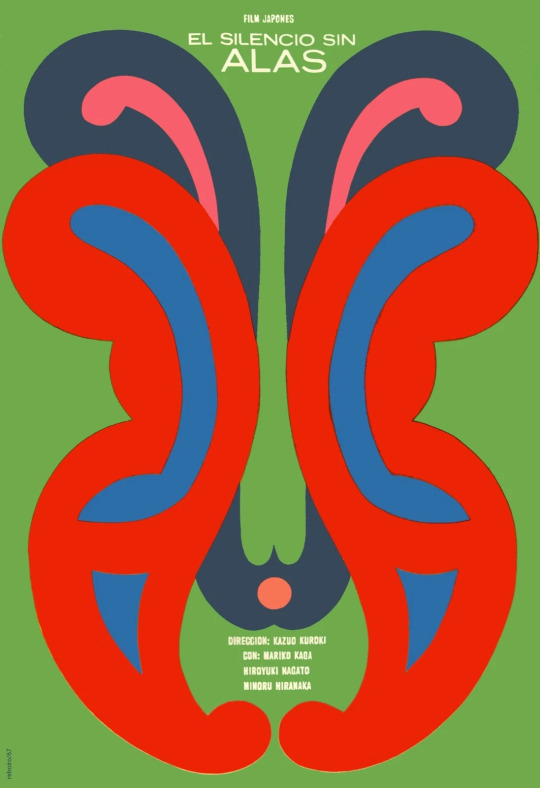
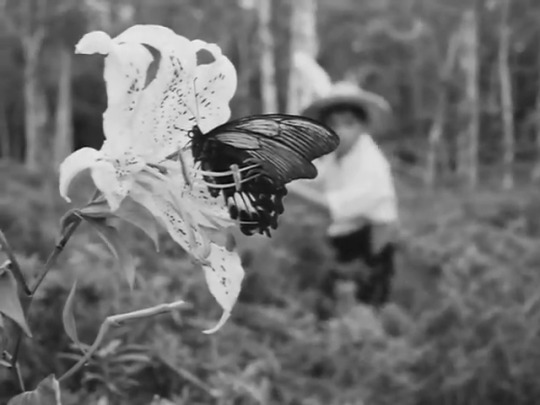

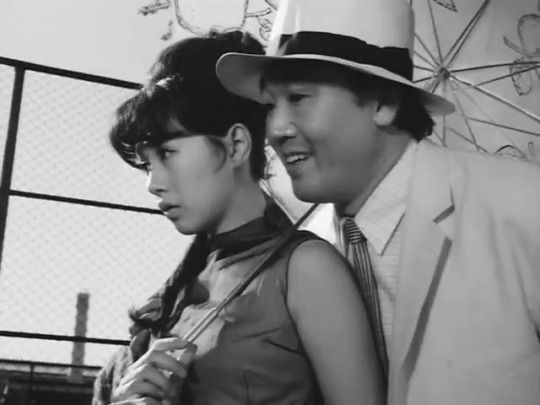


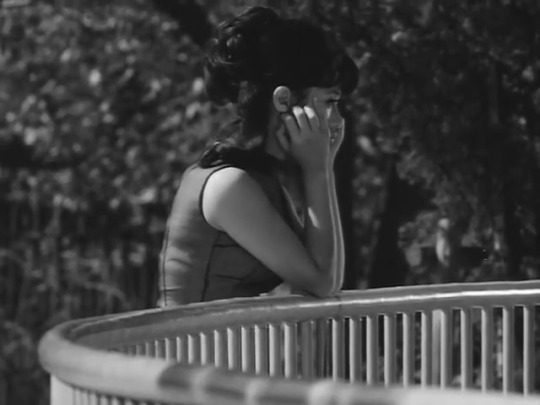




1966年 映画「とべない沈黙」
監督:黒木和雄 脚本:松川八洲雄 岩佐寿彌 黒木和雄 音楽:松村禎三 撮影:鈴木達夫 加賀まりこの衣装デザイン:中林洋子 制作:日本映画社 配給:ATG(アート・シアター・ギルド)、東宝
出演:加賀まりこ、平中実、小沢昭一、戸浦六宏、山茶花究、木村俊恵、長門裕之、蜷川幸雄、五月美沙、小松方正、渡辺文雄、水島弘、田中邦衛、坂本スミ子、東野英治郎、日下武史 ほか
言わずと知れた昭和60年代の超アバンギャルド日本映画。
暖かいところでしか生きられないナガサキアゲハを北海道の森の中で捕まえた一人の少年。
しかし、周りの大人はあり得ない事だと否定し少年を突き放す。
少年は悲しみの中、その蝶の羽を千切り石狩川に捨てる。
主人公の女性(加賀まりこ)は、このナガサキアゲハの化身となり、様々な訳アリの人々との出会いと別れを繰り返しながら旅をする。
京都のシーンでは三十三間堂、南禅寺、大谷本廟の墓地がたっぷり。
鈴木達夫のカメラワークがなかなかの絶品。
映画冒頭の切なさに輪をかけて切なさを増幅させたエンディングに胸が痛む。
2020年に英国映画協会(BFI)がこの映画を1966年の最優秀日本映画に選出、フランスでの上映の際にはフランス映画アーカイブ「シネ���テーク・フランセーズ」の設立者アンリ・ラングロワが絶賛。
トップ画像は、この映画のキューバ版ポスターで、デザインはキューバン・デザイン界の巨匠、アントニオ・フェルナンデス・レボイロによるものです。
8 notes
·
View notes
Text
Romantic Killer live action!!

7 notes
·
View notes
Text
「ヤマトさんとか来た時にワンワンしないの!」と優しく怒られているチワワの「のぶなが」くん。
縄張り意識のせいか、クロネコヤマトなどの配送業者が家に来ると、吠え散らかすチワワが多いようです笑。
「のぶなが」くんは、TikTokなどで人気のチワワのようで、動画の中での飼い主さんの話し方とか替え歌とかが、とくに面白いです。
私が飼ってるチワワのジミーくんも、クロネコヤマトなどの配達員が来ると、ものすごい剣幕で吠え散らかして、、
のぶながくんも飼い主さんに諭されているように「みんなびっくりしてる」のです。
「玄関の外に響いてるよ」
「大家さんに言われちゃうよ」
「次から気をつけてね」
と説得されてますが、次からも同じで、、、
番犬意識が高いのは、素晴らしいことなのですがね👏
有名な配送業者と言えばクロネコヤマト、佐川急便、郵便局ですけれども
私のチワワは、特にクロネコヤマトに反応してます。
しかし、どうやって業者を識別してるのか?が気になり、行動をじっくりチェックしてみました。
どうやら、ドライバーが車から降りてドアを閉めるときの音で3つの配送業者を識別してるようで
クロネコヤマトの配送員が車から降りた時点から、急に顔つきが変わるのです。
横浜の石川町では、引っ越してすぐは���造のアパートで暮らしていました。
部屋が1階だったので、クロネコヤマトが来たときに車のドアの音がすごくよく聞こえるのです。
多分それで覚えたようで。
今は京都の実家の1階にいるので、家の前にクロネコヤマトの車が止まると、配送員が車のドアを閉める音が聞こえてきます。
その音ですぐに気づいて玄関まで、たたたと走って行くジミーくん。
そして、吠えまくる!!
話は少し戻りまして、横浜の石川町では、木造のアパートの次にオートロックのマンションで暮らしてました。
マンションでは4階の角部屋で暮らしておりまして、車のドアの音は聞こえなかったのですが
クロネコヤマトの配送員が部屋の玄関までたどり着くと、さっきまで寝ていたのに耳をぴんと立てて、これまで通り吠え散らかしてました。
木造のアパートの時は、近隣に犬を飼っている一軒家が多かったので、そんなに気を使わなくてもよかったのですが…
マンションは、隣の部屋の人とかにすごく気を使ってしまいましたね。
ライターの仕事で化粧品などを受け取らなければいけなくて、すごく荷物が多い時があったのですよ。
そのたびに、すごい声で吠え散らかすので、本当に大変でした。
考えた末、マンションに備え付けの宅配ボックスか、駅やコンビニ、スーパー、病院などの近くにある宅配ロッカー等で受け取ることにしました。
PUDOとか、はこぽすとかですね。
PUDOでは佐川の荷物も受け取れますよね。
郵便局のはこぽすも便利。
セキュリティー的にも、そちらの方が良かったりしますね。
置き配もいいのですが、、、クロネコヤマト以外の手続きが面倒だったりします。
オートロックマンションですと、キー解除もしなきゃいけない。
また、オートロックのマンションは安全だと安心してしまいがちですが、そうでもないかもしれません。
配送員だと思ってマンションのオートロックを解除したら、実は配送員ではなかった…みたいな事もあると思います。
特に、都会では気をつけたほうがいいです。
これから、マンションに滞在することもあると思いますが、荷物は外で受け取ろうと思っています。
結構最近は便利になりまして、受け取りやすくなったからよかったですね。
時間指定は便利なようで便利ではないし、都会だと宅配ロッカーがたくさんあるので、
どこかに行ったついでに取りに行けるから、そっちの方がいいですね。
とりあえず、犬がいるといろいろ大変です笑。
私の愛犬です↓
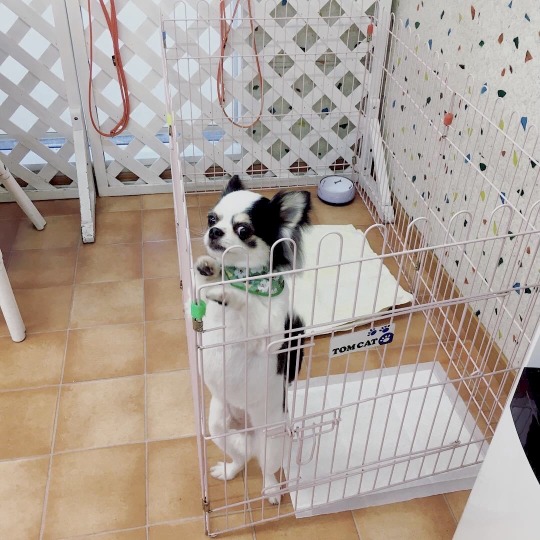
普段はおとなしいのですがねー。
54 notes
·
View notes
Text
夜、貢は当直室にいた岩﨑を「夜這い」、布団の上で愛した。Tシャツを脱がせると女性化した乳房が現れ、すでに隆起していた。普段はブラジャーをしており、それを隠す様にベージュ色のタンクトップを着ていた。貢はその乳房を鷲掴みにし、更に接吻をした。
「はァぁぁぁぁぁん…」
岩﨑は歓喜の声を上げ、貢のネクタイを緩め、スラックス越しに股間を愛撫した。すでにチ◯ポは硬直していた。そのうちに貢は自らベルトを緩め、スラックスを脱ぎ捨てた。真っ白なシースルーのビキニだった。腰を突き出し、彼は岩﨑のスエットパンツを下ろした。無意識のうちに内腿を開き、その間に貢はその間に挟まった。
「岩﨑、スゴいよ…」
熱気が宿直室中に立ち籠める。岩﨑はレース柄のピンクのビキニを穿いていたが、それも貢に脱がされた。彼も貢のビキニを脱がせ、互いに全裸となった。互いに「兜合わせ」をし、先走り汁で股間を濡らした。
岩﨑は「雌馬」の様に、貢の卑猥なほどにいきり勃った肉棒に突かれながら乳房も揉まれ、エクスタシーに酔い痴れた。先刻、「腿カン」をしてダメージを受けた同一のものとは思えなかった。
「あッ、あはァん、あん!」
次第に先走り汁がとめどなく滴るチ◯ポが激しくピクつき、もうじきオルガズムだなと貢はそれを弄び始めた。
「こ、この雌馬め!」
そう罵りながら貢はいっそう激しく腰を振り始めた。彼も絶頂に達しそうだった。
「あはァあああああん!」
宿直室に岩﨑の絶叫が響く。階上の生徒らに聞こえたら���うしようと貢はふと思ったが、彼の肉棒に突かれる岩﨑の「雄マ◯コ」はあまりに熱く、「ラヴオイル」がなくても十分に粘液で満ちていた。こいつは本当に女なんじゃないか?と、貢は思った。
「あはッ、イ、イッちゃうゥゥゥゥゥ!」
岩﨑はすすり泣きながらそう訴えた。貢も全身が汗まみれになりながら、
「オレの子どもを産んでくれ!」
と叫んだ。そして、
「あッ、あぁ、あん、あッ、あはァあァァァァァ〜ン!」
と二人はオルガズムに達した。頻りに愛液が跳び散り、これまでにない脱力感に貢は襲われ、そのまま岩﨑の背中にうなだれた。一瞬、沈黙がやって来たが間もなく、
「あんッ、あッ、あん!」
と鞭打つ音と同時に声が聞こえた。岩﨑は血相を変え、
「いやァあぁぁぁぁん!」
と絶叫した。彼は枕で頭を覆い、
「くわばら、くわばら…」
と唱えた。貢も、
「…も、もしかしたら!?」
と父・操の日記を思い出し、
「マ、マジか!?」
と身震いした。
二人は慌ててシャワーを浴び、服を着て声が聞こえた方向に走って行った。雑木林に入ると、その声はますます大きく聞こえた。まるで誰かが実際に鞭打ちをしているかの様だった。亮司の寝泊まりしている「別荘」はさほど遠くない。別荘の玄関からちょうど亮司が出て来るのを貢は確認し、声をかけた。
「り、亮ちゃん、あの声で起きたの!?」
「あぁ、今夜は何か激しいな…」
「実は、親父の日記を読んでたら、やっぱり首吊り自殺をした生徒がいるらしいンだ」
「マ、マジで!?」
亮司も貢と岩﨑に合流し、恐る恐るその声の聞こえる現場へ向かって行った。鞭打つ音と同時に、
「あッ、あん! あん!」
と言う声がますます大きく聞こえてくる。岩﨑は両耳を押さえながら、
「小便ちびっちゃいそう!」
と訴えた。
その時だった。三人が別荘から数メートル歩いて行ったところに、何やら石碑らしいものを見つけた。亮司は懐中電灯をその石碑に向け、確認した。其処には、
「一生徒、此処にて自死せり。
一九七八年八月二十九日」
と刻まれていた。貢は、
「まさか、親父がこれを…?」
と言った。
「せ、先生! 助けて! 助けて!」
三人は、この近くであたかも叫んでいるかの様にはっきりと聞こえたので互いに顔を見合わせ、血の気が引いてしまった。そして、
「きゃあァァァァァァ〜!」
と絶叫しながらその場から駆け出してしまった。
その夜、亮司は恐怖を吹き飛ばすかの様に酒を飲み、貢と岩﨑は互いに離れじとて抱き合っていた。
翌日、三人は寝不足のまま朝を迎えた。特に貢は、何度も岩﨑に抱きつかれ、
「今週、ずっと一緒にいて!」
と身体をがんじがらめにされていた。大きなあくびをしながら、
「…あいつ、疲れるなァ〜」
と正面玄関で登校してくる生徒らを出迎えていた。
一方、校内ではおばけが出たと教室中で噂になっていた。職員室でも授業の時に生徒が話題にしていたのを聞いたという教師らがいた。それを耳にした秀一は、
「この学園に『おばけ』なンているんですか?」
と大平に聞いた。彼は、
「昔、敷地内の雑木林で首吊り自殺をした生徒がいるみたいなンです。オレも詳しくは知らないンすけど…。今朝、岩﨑校長が凄まじい顔で、
『おばけ出たのよォォォォォ〜!』
って皆に話してたンです」
と言った。
『おばけねぇ〜』
秀一は、「妖怪」や「おばけ」という存在を信じていないからか、内心は嘘でしょう!?と思っていた。大平はコーヒーを飲みながら、
「そう言えば、岩﨑校長が今週は寮の当直なンすけど、昨夜のことですっかり怖気づいちゃって…。代わりに益子先生にやってもらいたいって言ってましたよ」
と言った。
「はァ〜!?」
未だ入職して一週間も経たないのに、いきなり寮の当直ですか!?と、秀一は驚いた。
「ち、ちょっと…。校長先生に聞いてみます」
彼は席を立ち、校長室へ向かった。岩﨑はソファに横たわり、うなだれていた。秀一の声がドア越しに聞こえるとスクッと起き、髪を直した。
「は〜い」
まるで男を待ちわびた女の様に彼はドアを開けた。秀一の姿を見ると、
「あら、益子先生。どうしたの?」
と声をかけた。秀一は聞いた。
「お疲れ様です。校長先生、大平先生から聞いたンですが…寮の当直の件で」
「まァ、立ち話も何だから、室内へ」
岩﨑は、初対面では敬語を使っていたがすでに女言葉で他の教師とやり取りしているところを目撃されたので、素のまま話し掛けようと思った。あと、今日は何故かブラジャーの締め付けがキツく感じた。女性化した乳房の故に付けているのだが、恐らく昨日の「おばけ」騒動で寝不足なのも関係しているのだろう。彼は、
「益子先生。申し訳ないけど、ワイシャツ越しでイイから、ブラジャーのホック外して」
と言った。
「ブ、『ブラジャー』!?」
「ホルモンバランスが崩れてるのか、おっ◯いが女性化しちゃったの。今日は何かキツくて…」
「は、はい」
秀一は、変態か?と思いつつも岩﨑に言われた通りにワイシャツ越しにブラジャーのホックを外した。タンクトップを着ていたが、その中に、確かにもう一つ何か付けているのを感じた。彼は微かにパルファムの香りがするのを認めた。
「校長先生、香水付けてます?」
「うん、一応ね。でも、天然由来のものだから」
確かに、キツくはないハーブ系の香りがしている。秀一はパルファムには全く興味がなかったので、何の香りか区別がつかなかったが。
岩﨑は、後ろ姿を見ると所謂「なで肩」で、仕草も歩き方も女性的だった。身長は百七十センチぐらいだろうが、男特有の「ガサツさ」はなかった。秀一は、これまで彼の様な男とは出会ったことがないと思った。彼は、
「校長先生、本当に男なンですか?」
と何気に���いてみた。すると、
「…一応、チ◯ポはあるわよ」
と言ってから、
「何言わせるのよ、スケベ!」
と顔を赤らめた。
『何自分から突っ込んでンだか…』
と秀一は苦笑した。
結局、大平の言う通り、「おばけ」が出るから寮の当直を代わって欲しいという話だった。岩﨑は言った。
「ミッちゃん…理事長がおっしゃるには、先代の方と関係があった生徒さんらしいのよ。余程ショックだったンだわね。あんな墓標まで作って…。その雑木林に『別荘』があってね、其処に用務員のオヤジが泊まり込んでるから、聞くとイイわ」
「用務員」?と、秀一は首を傾げた。未だ接点はなかった。その用務員がかつての恩師である亮司であることも、彼には判らなかった。秀一は、
「じゃ、寮に五日間泊まればイイんですね? イイですよ」
と引き受けた。
「御免なさいねぇ〜、入職したばかりで無理言っちゃって…。頼りにしてるわ」
こう言いながら、岩﨑はウィンクをした。彼のまさかの振る舞いに、秀一はただ苦笑するしかなかった。
10 notes
·
View notes
Text

【かいわいの時】宝暦十四年(1764)四月六日:対馬藩通詞鈴木伝蔵、大坂に滞在中の朝鮮通信使節随員*を殺害し出奔(大阪市史編纂所「今日は何の日」) +崔天宗(チェ・チョンジョン)
この事件が人参売買をめぐる金銭返済のトラブルが原因である説を裏付ける論拠として『明和雑記』には次のように記されています。
明和二乙酉年人参(の)事 去申年朝鮮人来朝の節、所々におゐて内々にて人参を売買ありし所に御聞に達し、厳しく御吟味有之。大坂表にても内々にて買取し者これありし由にて《略》其後段々御免是有過半相済候へ共、いまた御預ケ入牢のもの是あり。此一件ハ大坂ばかりにかぎらず江戸京其外西国筋にもかゝり合有之由、此根本といふハ皆々鈴木伝蔵か所為なるよし。亥年迄も相済ず、子の年春の頃大坂の懸り合ハのこらず相済候へども其外の所ハ存ぜず。※句読点後付け
この事件は大阪ばかりでなく、京都・江戸及び遠くは九州までにその影響を及ぼしており、その余波は事件後5年近い歳月を経てようやく終りを告げたのである。こうした経過はこの事件の深刻さを物語っているのであり幕府側の事件に対処する厳しさも考えられるのである(朴賛基)。「朝鮮通信使と歌舞伎」第14回国際日本文学研究集会研究発表(1990. 11.16)より。
(写真)羽川藤永「朝鮮通信使来朝図」延享五年頃/1748年頃
肉筆の浮絵は作者名が記されないことが大半ですが、本図には珍しく作者の羽川藤永の款記があります。朝鮮通信使とは、徳川将軍が代替わりの際などに来日した朝鮮からの使節団で、本図のような隊列を組んで各地を練り歩いた様子が多くの絵画史料に伝えられています。本図もそのひとつであるならば、このような大型で入���な描写の肉筆浮絵が描かれるのは1740年代と考えられるので、1748年に江戸を訪れた第10回の通信使を描く作品ということになります。しかし、この名称は通称として一般に定着していますが、表現内容については議論の的となっています。
本図の線遠近法の消失点付近には富士山を背にした江戸城の石垣が見えていますが、この行列を朝鮮通信使と考えれば、輿に乗った正使とその一行がこれを後にして、使館の浅草本願寺へ戻るため常磐橋(ときわばし)を渡り、本町(ほんちょう)二丁目を過ぎていく様子と解釈できます。しかし行列の細部を検討すると、実際の通信使とは異なる部分、たとえば、行列の中心である輿に乗る人物が、正使にふさわしい有髭の成人男性ではなく、無髭の子供であることなどが指摘されています。これを理由に本図に描かれているのは江戸の山王祭の唐人行列とする説もあります。
本図の収納箱の貼紙によると、この図が徳川吉宗の第二子、田安宗武の子で、1753年に9歳で夭折した小次郎(孝慈院)の愛玩の作品だったことがわかります。徳川将軍の孫に見せるための作品としては、その主題は単なる祭礼風景ではなく、異国からの使節を迎え入れた徳川将軍家の威光を��す意味付けも必要だったはずで、山王祭の唐人行列を参考にしつつ、名目上は朝鮮通信使の行列図として描かれ田安家に納められたという仮説も検討すべきでしょう(文化遺産オンライン=画像も)。
10 notes
·
View notes
Text
多賀城
東北にあった古代の城柵🏰その歴史は古く奈良時代まで遡り陸奥国府や鎮守府が置かれ、東北地方の政治、軍事、文化の中心地であった。

中心の政庁跡



政庁跡から復元された朱塗りの南門を臨む

近くから見た立派な南門


南門付近にある祠の様なものに守られた国宝の多賀城碑


社の中にはこの様な石碑がある

南東にある外郭施設跡。今なお材木塀の根本が埋まっている

東門北櫓跡






#photographers on tumblr#travel#cool japan#castle#photography#photo#instagood#tour#landscape#バイクで行く景色#history#東北#多賀城#日本の城#古代#奈良時代#平安時代#日本の歴史#城柵#仙台#国府#国宝
10 notes
·
View notes
Photo




バビロニアの世界最古の地図「イマゴ・ムンディ」を解読、ノアの箱舟伝説と酷似した記述を発見 公開:2024-11-03・更新:2024-11-03
著者konohazuku・パルモ
「イマゴ・ムンディ」はおよそ2600年前(3000年前という説も)に作られたバビロニアの世界地図だ。
粘土板に描かれたその地図はすでに多くが失われ、現存するのは一部のみだが、大英博物館にあるそのかけらから、最近新たな発見があった。
裏面に刻まれた楔形文字の解読が進み、聖書のノアの箱舟伝説と酷似する大洪水物語が描かれていたことがわかったのだ。
1882年、現在のイラク、バグダッド近郊、かつてのバビロニアの都市シッパルで発見されたこの地図は、専門家たちが今日に至るまで、その謎を解明すべく、様々な研究が行われている。
古代バビロニアの世界最古の地図 手のひらよりわずかに大きいこの粘土板には、世界最古の地図が描かれている。
「よく見ると二重の円が描かれていて、そこに楔形文字で〝苦い川〟と記されているのがわかります」 大英博物館のキュレーター、アーヴィング・フィンケル博士は説明する。
二重円の内側には、メソポタミアを表す水域の境界線に囲まれたバビロンがある。そして、ユーフラテス川とバビロン自体を含むいくつかの主要都市が境界内に描かれている。
この画像を大きなサイズで見る 写真:(左)1925年、B・マイスナーによるバビロニアとアッシリアのスケッチ、(右)偽色彩法のために疑似着色されたもの image credit:Left; Bruno Meissner/Public Domain, Right; FlorinCB/CC0 既知の世界の向こうには、山か遠くの神秘的な土地を表したと思われる三角形が描かれている。
この場所は異世界の特徴と関連していて、フィンケル博士はこれを「魔法と謎に満ちた場所」と言っている。
まわりに刻まれた碑文は、ある奇妙な土地について述べている。そこは太陽がけっして輝かず、宝石のような木々が育ち、飛べない巨大鳥が歩き回るところだという。
フィンケル博士は、周囲の8つの三角形がつくる領域がバビロニアにおける日常を超えた異世界のネットワークを形成していることに注目している。
この画像を大きなサイズで見る バビロニアの世界地図「イマゴ・ムンディ」のかけら image credit:The British Museum/SketchFab/CC BY-NC-SA 4.0 ADVERTISING
ノアの箱舟を思わせる古代の洪水物語の記述を発見 粘土板の裏面は、見知らぬ土地へのガイドになっていて、冒険者が未知への旅で遭遇するであろう事柄を述べている。
ある箇所には、第4の三角形に到達するには「7つのリーグを通過しなくてはならない」とあり、「その先にはパルシクトゥの船ほどの分厚いものを見つけるだろう」という。
パルシクトゥという聞きなれない単語は、船の正確なサイズを示していて、ほかのバビロニアの粘土板、とくに巨大な箱舟のような建造物に関するバビロニアの洪水物語の中でのみ見られる。
この船はバビロニアの伝説の王ウトナピシュティムによって建造された。王は家族やさまざまな生き物を洪水から救うために、エア神の支持に従って船を建造したとされ、まるでノアの箱舟の話を思わせる。
「イマゴ・ムンディ」の碑文には、ウラルトゥという山にたどり着いたこの古代の箱舟のことが詳しく語られている。
聖書では、ノアの箱舟も同じように「アララト」の地にたどり着いたとされていて、専門家はこれがバビロニア人がウラルトゥと呼んだ山と同じだと考えている。
この話はノアの箱舟とまるで同じです。もちろん、一方がもう一方につながったのです(フィンケル博士)
バビロニア人にとって箱舟の旅は歴史の事実で、それが彼らの宇宙観と地理に反映されたのだ。
この画像を大きなサイズで見る アララト山のノアの箱舟、シモン・デ・マイル(1570年) image credit:WIKI commons メソポタミアの洪水伝説とその影響 バビロニアの洪水伝説は、ノアの箱舟話だけでなく、ほかの古代中東の洪水物語とも酷似している。
これは、異なる文明の間でも大洪水の文化的記憶が共有され、互いに影響を与えあっていたことを示している。
ギルガメッシュ叙事詩の洪水物話は、およそ3000年前の粘土板で知られているが、聖書のノアの洪水物話は約5000年前にさかのぼる。
これら文明の神話の間に古くから深く根づいたつながりがあることがはっきりわかる。
フィンケル博士は、このような大洪水の発生や、そこから生き残り、最終的に山の上で箱舟の残骸を目撃する話は、バビロニア人にとって単なる伝説ではなく、それが彼らの世界観や宇宙観に織り込まれたものであることだと説明する。
「イマゴ・ムンディ」の地図はこの物語を文字通りに象徴的に表していて、その描写は既知の世界の境とそれを超えた世界の始まり、つまり伝説と想像の場所の始まりを表しているというのだ。
The Babylonian Map of the World with Irving Finkel | Curator’s Corner S9 Ep5 知識と伝説が絡み合う興味深い地図 古代にバビロニアと聖書の洪水物語がつながっていたという今回の発見によって、ノアの箱舟と舟がたどり着いたアララト山の山の位置をめぐる論争が再燃している。
アララト山の遺跡を調査してきたイスタンブール工科大学の研究者たちは、海底粘土と古代人らの活動の証拠を発見した。その時期はおよそ3000~5000年前にさかのぼるという。
ここからまた、古代の洪水がこの土地の景観を形作り、こうした洪水伝説発生のきっかけになったのかどうかという疑問が出てきている。
シドニー大学のアンドリュー・スネリング博士は、洪水が起こるまではアララト山は存在せず、箱舟がそこに到達することは不可能だったと主張している。
歴史家の多くは、ノアの箱舟の話は歴史的事実ではなく象徴的な物語だとみなしているが、「イマゴ・ムンディ」のような遺物やその他文献の発見は、こうした物語が、現実に起きた出来事から生まれた可能性に心惹かれる人々の興味をそそり続けている。
「イマゴ・ムンディ」は、バビロニア人の世界と宇宙に対する認識を明らかにするだけでなく、中東の古代文化が大洪水という共通の文化記憶を共有して、粘土板に永遠に刻みつけていたことを裏付けている。
References: A new finding on the 3,000-year-old Babylonian Map of the World reveals the legendary tale of an ark and a Great Flood, drawing parallels with the Biblical story of Noah's Ark.
あわせて読みたい
4000年前の粘土板を解読、月食にともなう王の死と破滅の予言が刻まれていた
怪物や謎が満載!2600年前に作られた世界最古の世界地図「イマゴ・ムンディ」
古代メソポタミアのレンガが3000年前の地磁気異常を記録していた
古代バビロニアの文章を解読できるAIを開発。ギルガメシュ叙事詩の一部や賛歌を解読
世界最古の幽霊か?3500年前の古代バビロニアの粘土板に記された幽霊画 #考古学 #遺物 #地図 #世界最古 #解読
(バビロニアの世界最古の地図「イマゴ・ムンディ」を解読、ノアの箱舟伝説と酷似した記述を発見|カラパイアから)
14 notes
·
View notes
Text
「宮崎正弘の国際情勢解題」
令和七年(2025年)6月26日(木曜日)
通巻第8840号
トランプが次に準備中のEO(大統領命令)は大手銀行が対象
暗号通貨業界に融資しないなどの差別をやめろ!
*************************
トランプ政権は新しい、しかも画期的な大統領令発令の検討に入った。
対象は名指しされていないが、JPモルガン、シティなど大手金融機関である。「政治的に好ましくない業界」と銀行などが判断した業界、とりわけ暗号通貨企業や銃器メーカーへ融資を渋ったりする金融機関に対して、差別的な業務を阻止するEOである。
「オペレーション・チョークポイント2.0」と呼ばれるのは、政治的に物議を醸している特定のセクターをめぐって金融規制当局と銀行が非公式に調整したとされるもの。
とくに大手銀行のなかには暗号通貨を敵視しているため、苦情が殺到、バイデン政権下で銀行サービスの提供を拒否されたという。もとより暗号通貨は既存の銀行の敵だ。
2023年初頭、シリコンバレー銀行、シルバーゲート銀行、シグネチャー銀行が突如破綻した。これらの銀行の急速な破綻は、バイデン政権が政策の失敗とされ、投資家の中には「金融排除(融資しない)を通じて『デジタル資産エコシステム』を解体しようとする「組織的な取り組み」だと分析している。つまり反暗号通貨の政治判断で倒産を促進したとい鵜野だ。
すでにトランプは「オペレーション・チョークポイント2.0を終結させる」と宣言し、政治的立場に関わらず中立的な銀行アクセスを回復するとしている。
これは超党派の懸念として広く認識され、極左のエリザベス・ウォーレン上院議員は2月の上院公聴会で、「誰に投票したか、何を信じているかによって、誰も金融システムから締め出されるべきではない」と述べた。
JPモルガン・チェース、シティグループ、ウェルズ・ファーゴなどの大手銀行は、「暗号通貨、銃器、化石燃料といった業界へのサービスを意図的に制限したことはない」と否定している。
7 notes
·
View notes
Text
できることから
なんとかします💪 敷地内の東側、石のエリアと呼んでいるとこですが、去年まで妙にバタバタしてていろんなものの手入れを怠ってました😩 まずは月桃を減らしてみます😅 画像で見ると大したことなさそうですが、長いヤツで2m超えてるのも😩 道路側へ倒れて葉っぱを落とすと面倒なので、あまり長いのは切ることにしました。 隣にあるクチナシやビワよりもだいぶ低くなって、スッキリしてきました😅 前回紹介したアガパンサスに変化が💦 わりと小さめの株からもつぼみを持ってて、だんだん大きくなってきました😊 なぜだかはわかりませんが、今年は早めの開花となりそうです。 ここの石のエリアはクロキ、ツバキ、トネリコと三つの大木があります💦 今年はこの場所から枝打ちを進める予定。こういう花たちにももっと陽の光を当てられるようやってみます😅 天気と相談しながらなのでどうなりますか😂 できることからがんばります💪 それではまた✋

View On WordPress
11 notes
·
View notes
Text

Legends and myths about trees
Celtic beliefs in trees (26)
I for Idho (Yew) - December 21st Winter Solstice
“Death of a king in his waning 6 months - The Celtic Tree Calendar (Ref), the end of the beginning, the beginning of the end ...”
Colour: dark green; Star: Saturn; Gemstone: olivine; Gender: female; Metal: lead, Element: earth; Patron: Banba, Hecate; Symbols: resurrection, death + rebirth, eternity, path to meet ancestors + land of the soul
Today is the winter solstice, also called the hibernal solstice, the day in the northern hemisphere when the sun is at its lowest altitude in the south and day is shortest and night longest during the year (reversed in the southern hemisphere).
Yew is an evergreen tree with dark green leaves and red berries. The yew is a robust tree with a thick girth and an extremely long life. It is probably the longest lived of all trees.
As soon as the downward reaching branches reach the ground, the tree begins to grow strongly, as if it has been reborn as a new tree. The eldest living yew tree is in Europe is said to be the Fortingall Yew, in Perthshire, Scotland, and it has been estimated between 3000 to 9000 years old.
In addition, the yew's hollowed-out heartwood, especially when wet, looks like a flayed animal, and when cut it appears to bleed, so the yew is increasingly said to be a sacred tree. Yew sticks were believed to be able to divine the future, and yew sticks were used as 'writing pillars' to engrave the Ogham script, as they could be preserved almost forever.
As the druids believed the natural law of reincarnation, where the soul becomes reborn as another person, the yew was seen as a protector of the soul during the journey to the Otherworld. Some believe that the road to the Otherworld is shaded by rows of yew trees. Furthermore, the yew is said to stop any obstacles caused by evil spirits from the other world.
As a sacred 'tree of immortality', believed to protect and purify the dead, yews are often planted in cemeteries, many of which are as old as the church or much older.

ケルト人の樹木の信仰 (26)
IはIdho (イチイ) - 12月21日 冬至
“衰えゆく半年の王の死 〜 ケルトの木の暦(参照)、始まりの終わり、終わりの始まり…”
色: 深緑; 星: 土星; 宝石: オリビン; 性: 女性; 金属: 鉛; 要素: 土; 守護神: バンバ、ヘカテ; シンボル: 復活; 死+再生、永遠、先祖に出会える道+魂の国
今日は冬至、北半球では太陽の南中高度が最も低く、一年の間で昼が最も短く夜が最も長くなる日(南半球では逆転する)。
イチイは濃い緑色の葉を持ち、赤い果実を実らせる常緑樹。イチイはたくましい樹木で胴回りが太くなり、ものすごく長生きをする。おそらくすべての木の中で最も長生きする木といえるだろう。下方に伸びた枝が地面に着くと、新しい木に生まれ変わったかのように、力強く生育を始める。ヨーロッパで最も古いイチイの木は、スコットランドのパースシャーにある『フォーティンゴールのイチイ』と言われており、樹齢は3000年から9000年と推定されている。
また、幹の中が空洞になったイチイの心材は、とくに湿っていると、一見皮を剥がれた動物のようで、切れば血を流すようにも見えるため、ますますイチイは聖なる木だといわれるようになった。
イチイの杖は未来を占うことができるとされ、またイチイの棒はほぼ永遠に保存できるため、オガム文字を刻印する「文字棒」として使用された。ドルイドは、魂が別の人間に生まれ変わるという輪廻転生の自然法則を信じていたので、イチイはあの世への旅の間、魂を守ってくれるものと考えられていた。冥界に至る道はイチイ並木の木陰になっているという説もある。さらに、イチイは異界の悪霊が起こすいかなる障害をも食い止めるという。
神聖なる「不死の木」として、死者を守り浄化すると信じられたイチイは墓地によく植えられ、その多くは樹齢が教会と同じか、またはそれよりずっと古い。
#trees#tree legend#tree myth#folklore#mythology#legend#celtic mythology#yew#nature#art#winter solstice#celtic calendar
132 notes
·
View notes